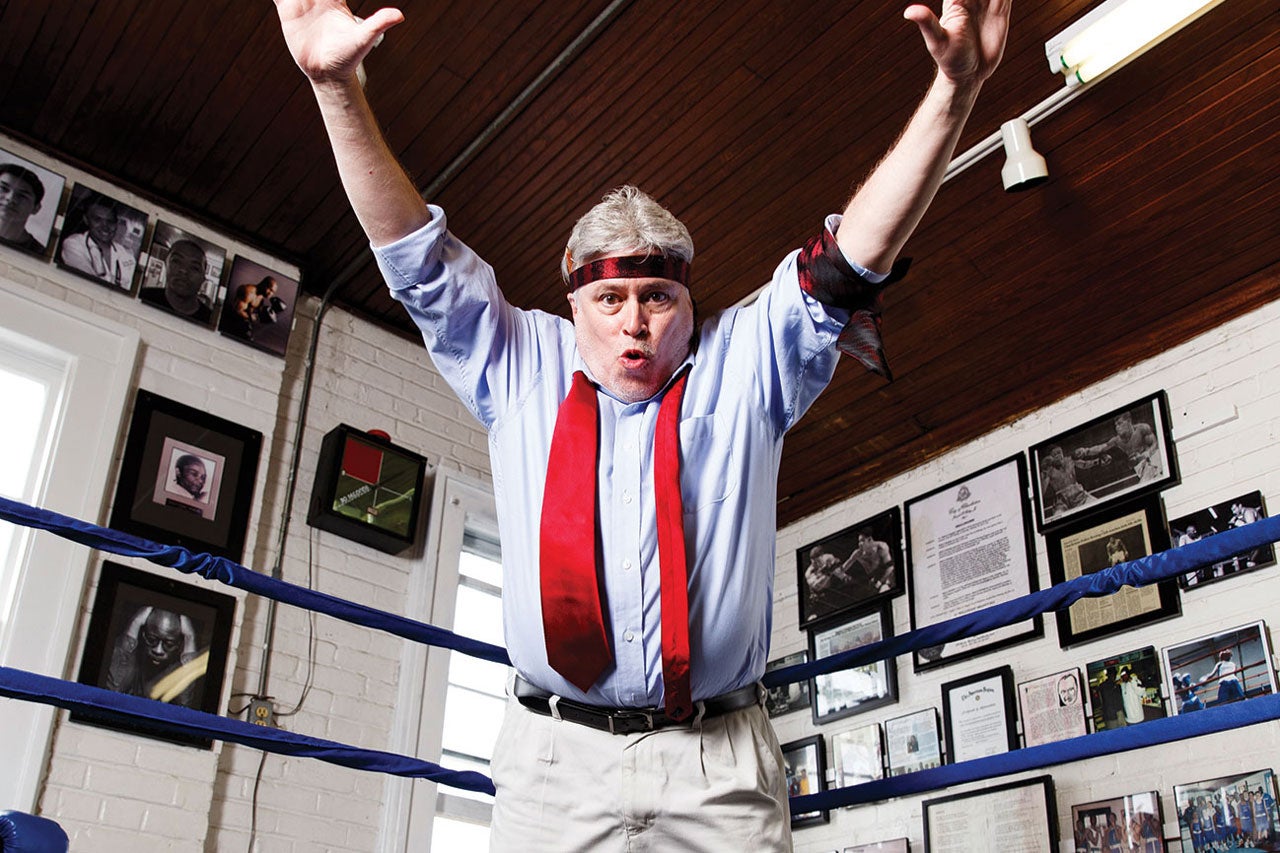If you mapped out the highlights of his life, you’d have a tight cluster confined to Charleston, S.C. But who says you have to leave home to live out your dream.
Growing up in the Riverland Terrace neighborhood on James Island in the 1950s and ’60s as the grandson of a Greek immigrant, Mike Mooneyham ’76 depended on his bicycle to take him wherever he needed to go. He could pedal from his home to the nearby Psaras Grocery Store his grandparents owned, to school and to the baseball field where he and the other “Terrace boys” played little league and traded baseball cards.

Mike Mooneyham ’76 has written the longest running wrestling column in the country. Photos by Kip Bulwinkle
The College, where he enrolled in 1972, wasn’t much farther. And from there, it was just a short trip up King Street to The Post and Courier, where Mooneyham spent the better part of 40 years writing about sports and gained an international following writing about professional wrestling. Though he retired from the newspaper earlier this year, he continues to crank out his popular weekly column, which has been published continuously in the sports section since 1989 and is the longest-running wrestling column in the country.
The roots of Mooneyham’s journalism career can be traced directly to a Saturday afternoon in the early ’60s. He and two friends were watching a black-and-white television when a pro wrestling show came on the air. The spectacle – the over-the-top theatrics and the enthusiasm of the fans – was a clarion call to Mooneyham. There was 600-pound farm boy Haystacks Calhoun and his baby-faced partner Johnny Weaver. A crazy, cane-wielding Kentucky Colonel named Homer O’Dell managed their opponents, two foreign menaces from Argentina and Yugoslavia.
“It was crazy stuff,” Mooneyham recalls of his introduction to pro wrestling. “It was sports, but it was these larger-than-life characters.”
He knew he had to see more. The following Friday night, he was in the stands of Charleston’s former County Hall, transfixed as he watched his first live pro-wrestling event. After that, he began devouring wrestling magazines and corresponding with other wrestling fans around the world. He started his own fan club and was soon submitting articles for publication in wrestling magazines.
In a scene reminiscent of Cameron Crowe’s autobiographical movie Almost Famous, in which a 15-year-old boy who loves rock music is hired to write an article for Rolling Stone magazine, Mooneyham earned his first byline in a national wrestling magazine in 1965. The editors had no idea the enterprising stringer was all of 11 years old.
Following his graduation with a degree in political science in 1976, he began his first full-time reporting gig with the Times and Democrat newspaper in Orangeburg, S.C. Three years later, he became the sports editor for Charleston’s News and Courier, relishing the opportunity to return home. Better yet, this new role enabled him to occasionally get wrestling stories into the paper.
“Wrestling back then was a very secretive society – it was almost like a mafia-type thing. The outcome of most of the matches was predetermined,” he says. “But most of the fans were true believers and came to see a fight.”
By maintaining the facade of reality that pro wrestling promoted to its fans, Mooneyham gained access and trust from a wide network of sources. By the time pro wrestling exploded into mainstream culture in the ’80s and ’90s, Mooneyham was well positioned to cover an industry that would help define the sports entertainment genre.
The reputation he built ultimately produced the New York Times–best-seller Sex, Lies and Headlocks, which he co-wrote in 2002. He was also inducted into both the Professional Wrestling Hall of Fame and the S.C. Pro Wrestling Hall of Fame.
And there’s nothing fake about that.




